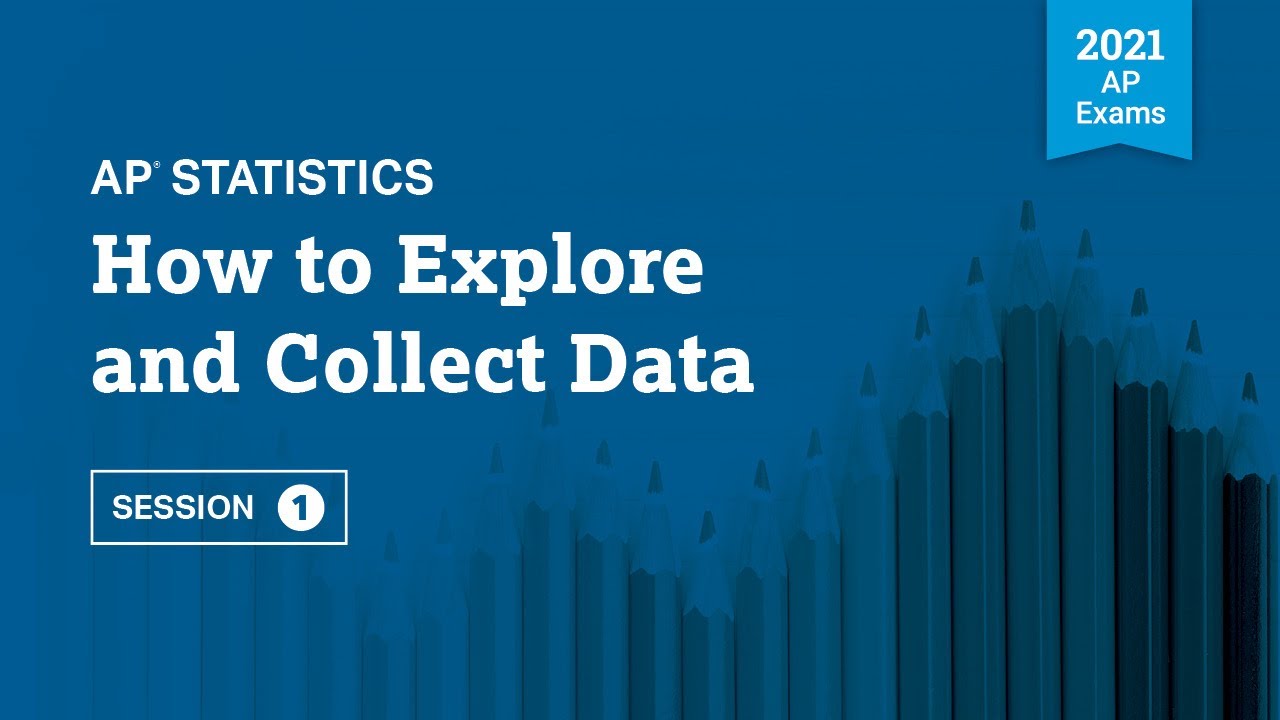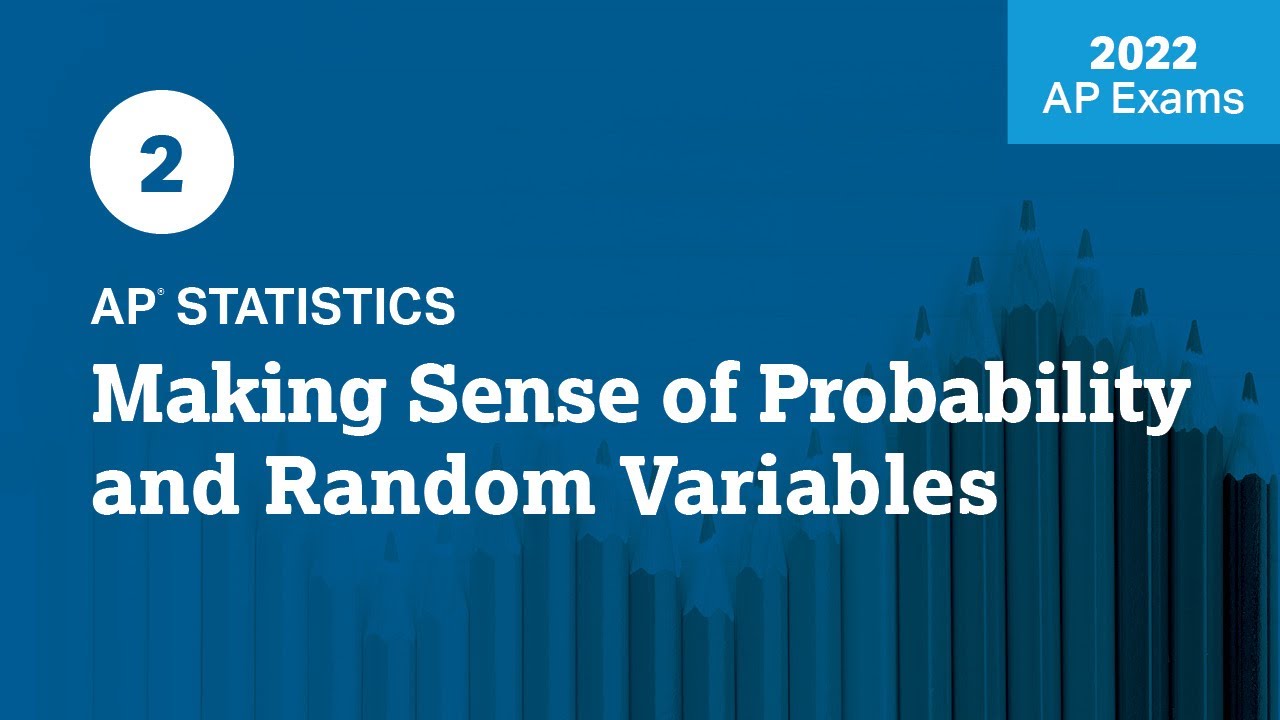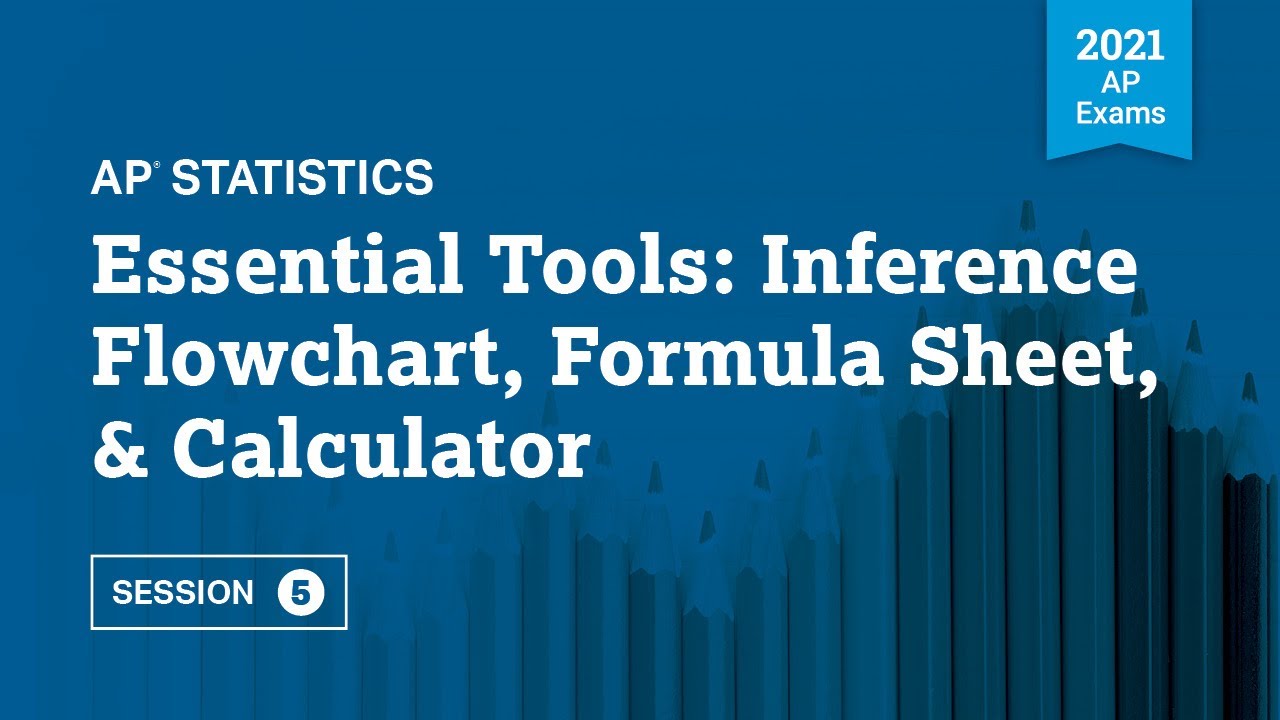2022 Live Review 1 | AP Statistics | Making Sense of Collecting and Exploring Data
TLDRThe video script features AP Statistics teachers Darren Starns and Luke Wilcox, who introduce their AP Daily Live Review series. With extensive experience in teaching and grading AP exams, they outline their eight-session plan to review essential content, share exam strategies, and build students' confidence for success on the AP Statistics exam. The first session focuses on data collection and exploration, offering strategies like active reading and anticipating answers to improve exam performance.
Takeaways
- 📚 The session is aimed at AP Statistics students, focusing on review and exam preparation strategies.
- 👨🏫 The instructors, Darren Starns and Luke Wilcox, have extensive experience in teaching AP Statistics and grading AP exams.
- 🎯 The primary goals of the review sessions are to review essential content, share specific strategies for exam success, and build students' confidence.
- 📈 The review will cover a range of topics from data collection and exploration to statistical inference and probability.
- 📝 The instructors provide a TinyURL link (www.tinyurl.com/APStats2022Review) for students to access handouts and materials for each session.
- 🔍 Emphasis is placed on understanding and interpreting summary statistics, as well as identifying outliers and distinguishing between different sampling and experimental designs.
- 📉 The importance of actively and carefully reading questions, especially noting key words and phrases, is highlighted as a strategy for success.
- 💡 Anticipating the answer by eliminating obvious incorrect choices is suggested as an effective multiple-choice strategy.
- 📑 The session includes a free response question practice, emphasizing the need to understand what is required for full credit.
- 📘 The session ends with a recap of the key points covered, reinforcing the importance of understanding the content related to collecting and exploring data.
- 🔑 The instructors encourage students to engage fully with the material and practice writing out their responses to prepare effectively for the AP exam.
Q & A
What is the purpose of the AP Daily Live Review sessions presented by Darren Starns and Luke Wilcox?
-The purpose of the AP Daily Live Review sessions is to review essential content and skills, share specific strategies for AP Statistics exam success based on the instructors' experience, and build students' confidence to maximize their exam scores.
How long has Darren Starns been involved with AP Statistics?
-Darren Starns has been teaching AP Statistics since the course began in 1996 and has been an AP exam reader for more than 20 years.
What is Luke Wilcox's experience with AP Statistics?
-Luke Wilcox has been teaching AP Statistics for 16 years and has served as an AP exam grader for about eight years.
What are the three main goals of the exam review sessions presented by the instructors?
-The three main goals are to review essential content and skills for the exam, share specific strategies for AP Statistics exam success, and build students' confidence to help maximize their exam scores.
How many sessions are planned for the AP Statistics exam review, and what will they cover?
-There are eight sessions planned, covering essential content from the beginning to the end of the AP Statistics curriculum, specific strategies for exam success, and tips for tackling different types of questions.
What is the first session led by Darren Starns about?
-The first session focuses on collecting and exploring data, aiming to review the essential content and skills related to these topics and to share specific strategies for success on the AP Statistics exam.
What is the URL provided for students to access support materials for the review sessions?
-The URL provided is www.tinyurl.com/APS-STATS-2022-R, where students can find handouts for each of the eight sessions and other supportive materials.
What is the significance of the five things one should include when describing a distribution of quantitative data?
-The five things to include when describing a distribution of quantitative data are shape, unusual features, center, variability, and context, which provide a comprehensive understanding of the data set.
What is the strategy suggested by the instructors for approaching multiple-choice questions on the AP exam?
-The strategy suggested includes reading actively and carefully, anticipating the answer by covering up the choices, and eliminating obvious incorrect answers to make an educated guess among the remaining options.
How does the change of an eight-dollar tip to an eighteen-dollar tip affect the mean tip amount according to the script?
-Changing an eight-dollar tip to an eighteen-dollar tip increases the total tips for the day by ten dollars, which would increase the mean tip amount by about 17 cents, calculated as an increase of 10 dollars over 60 tips.
What is the importance of the term 'influential point' in the context of the least squares regression line and correlation?
-An influential point is significant because its removal can change the values of the correlation coefficient and the slope of the least squares regression line by a considerable amount, indicating its impact on the overall data analysis.
What is the role of the '1.5 IQR rule' in identifying outliers in a data set?
-The '1.5 IQR rule' is used to identify outliers by determining if a data point lies more than 1.5 times the interquartile range below the first quartile or above the third quartile, indicating values that are significantly偏离 from the rest of the data.
How does the script emphasize the importance of reading carefully when answering exam questions?
-The script emphasizes the importance of reading carefully by highlighting common mistakes made due to misinterpretation of question details, such as assuming an additional tip would result in a 61st tip for the day, which would affect the accuracy of the response.
What is the key takeaway from the first session regarding describing or comparing distributions of quantitative data?
-The key takeaway is that when describing or comparing distributions of quantitative data, one should always consider the shape, unusual features, center, variability, and context of the distribution to provide a comprehensive analysis.
Outlines
📚 Introduction to AP Stats Review Sessions
The video script introduces two experienced AP Statistics educators, Darren Starns and Luke Wilcox, who have been teaching and grading AP exams for many years. They outline their three main goals for the review sessions: to review essential content, share specific strategies for exam success, and build students' confidence. The eight-session structure is explained, covering content from the beginning to the end of the AP Statistics curriculum, including data collection, probability, and statistical inference. The first four sessions will focus on content review, while the last four will concentrate on exam strategies and resources.
🔍 Data Collection and Exploration Overview
The first session, led by Darren Starns, focuses on the fundamentals of data collection and exploration. It emphasizes the importance of understanding summary statistics, identifying outliers, and distinguishing between different sampling methods and experimental designs. The session includes a warm-up quiz about describing quantitative data distributions and multiple-choice questions to practice these skills. Strategies such as active reading and careful consideration of question details are highlighted to improve exam performance.
📊 Analyzing Dot Plots and Summary Statistics
This section delves into analyzing dot plots to determine standard deviation and understanding summary statistics to assess the truthfulness of statements about a dataset. The discussion includes how to interpret the mean, median, quartiles, and interquartile range (IQR), and how to identify outliers using the 1.5*IQR rule. The importance of reading questions carefully to avoid common pitfalls is stressed, with examples provided to illustrate the correct approach.
🗣️ Sampling Methods and Experimental Design
The script explores different sampling methods, such as stratified random sampling and cluster sampling, and how to identify them based on the description provided in a question. It also discusses experimental designs, including completely randomized designs and matched pairs designs, and the importance of understanding the deliberate imposition of treatments in experiments. The goal is to prepare students to correctly identify sampling methods and experimental designs on the AP exam.
🌹 Experimentation with Floral Preservation
This part of the script describes an experiment where a florist investigates the effectiveness of a new powder in preserving freshness of cut flowers. The experiment uses a coin flip to assign roses to two different conditions: water with the new powder or water alone. The session aims to help students understand the difference between observational studies and experiments, and the importance of randomization in experimental design.
📈 The Impact of Unusual Data Points on Regression
The script discusses the influence of unusual data points, such as high leverage points and outliers, on the slope of the least squares regression line and the correlation coefficient. It explains how removing certain points can change the slope and correlation, and introduces the concepts of high leverage, outliers, and influential points in the context of data analysis.
💰 Describing Distributions and the Effect of Outliers
This section involves a free-response question about describing the distribution of tip amounts using five key elements: shape, unusual features, center, variability, and context. It also explores the effect of changing a single data point on the mean and median, emphasizing the importance of understanding how outliers can affect statistical measures.
📘 Reviewing Content and Strategies for Exam Success
The final paragraph of the script wraps up the session by reviewing the content covered, including interpreting summary statistics, identifying outliers, distinguishing sampling methods, and analyzing experimental designs. It also recaps the strategies shared for exam success, such as active reading and anticipating answers. The goal is to reinforce the importance of these skills and strategies in building confidence and maximizing exam scores.
Mindmap
Keywords
💡AP Statistics
💡Exam Reader
💡Free Response Questions
💡Confidence Intervals
💡Significance Tests
💡Multiple Choice Questions
💡Outliers
💡Stratified Random Sample
💡Least Squares Regression Line
💡Correlation Coefficient
💡Histogram
Highlights
Introduction to AP Daily Live Review for AP Statistics students by experienced educators Darren Starns and Luke Wilcox.
Darren Starns has been an AP exam reader and question leader for over 20 years, focusing on finalizing scoring guidelines for free response questions.
Luke Wilcox, with 16 years of teaching AP Statistics, has been an AP exam grader for eight years.
The review sessions aim to review essential content, share strategies for success, and build student confidence for the AP Statistics exam.
The eight-session structure covers content review and specific strategies to maximize exam scores.
Session one focuses on collecting and exploring data, including understanding and interpreting summary statistics.
Discussion on identifying outliers using the 1.5 IQR rule and understanding the implications for data distribution.
Explanation of different sampling methods, including stratified random sampling and cluster sampling.
Analysis of experimental designs, distinguishing between observational studies and experiments, and identifying completely randomized designs.
The impact of unusual data points on correlation and least squares regression lines, including the concepts of high leverage and influential points.
Describing distributions of quantitative data by focusing on shape, unusual features, center, variability, and context.
Strategies for multiple-choice questions, emphasizing active reading and careful consideration of each word in the question.
Approaches to anticipate answers in multiple-choice questions by covering up answer choices to focus on the question stem.
The importance of knowing what is needed for full credit on free response questions, including justifying answers with clear explanations.
Building confidence in understanding and applying statistical concepts for the AP Statistics exam.
Additional resources for review, including AP Classroom and specific AP Daily videos for further reinforcement of concepts.
Upcoming session two with Luke Wilcox focusing on probability and random variables, identified as a challenging topic by many students.
Transcripts
Browse More Related Video

2021 Live Review 1 | AP Statistics | How to Explore and Collect Data

2021 Live Review 8 | AP Statistics | Top 10 Tips for Success on the AP Statistics Exam

2022 Live Review 5 | AP Statistics | Vital Resources for the AP Exam: Inference Flowchart

2021 Live Review 7 | AP Statistics | Taming the Investigative Task on the AP Statistics Exam

2022 Live Review 2 | AP Statistics | Making Sense of Probability & Random Variables

2021 Live Review 5 | AP Statistics | Essential Tools Inference Flowchart, Formula Sheet & Calculator
5.0 / 5 (0 votes)
Thanks for rating: